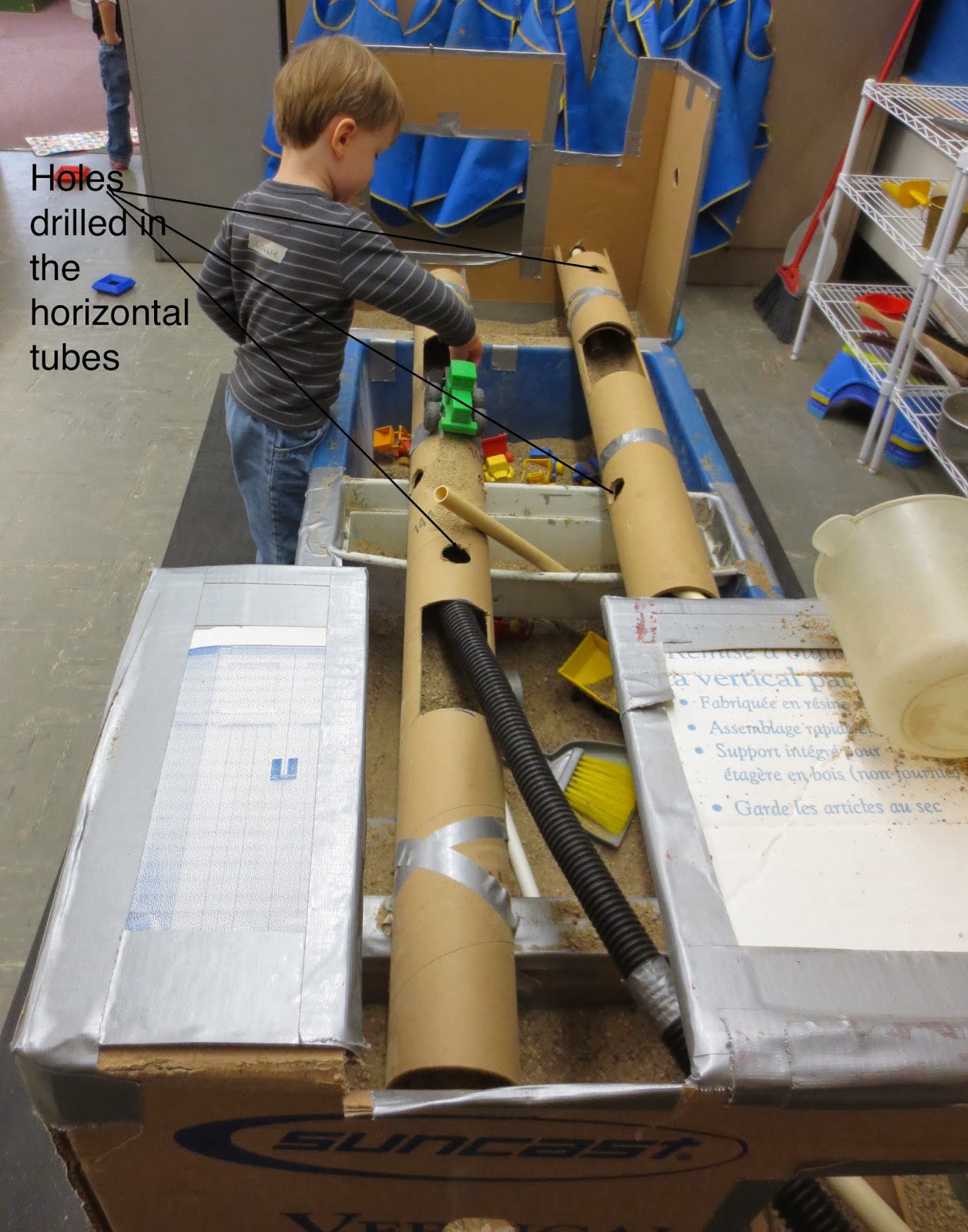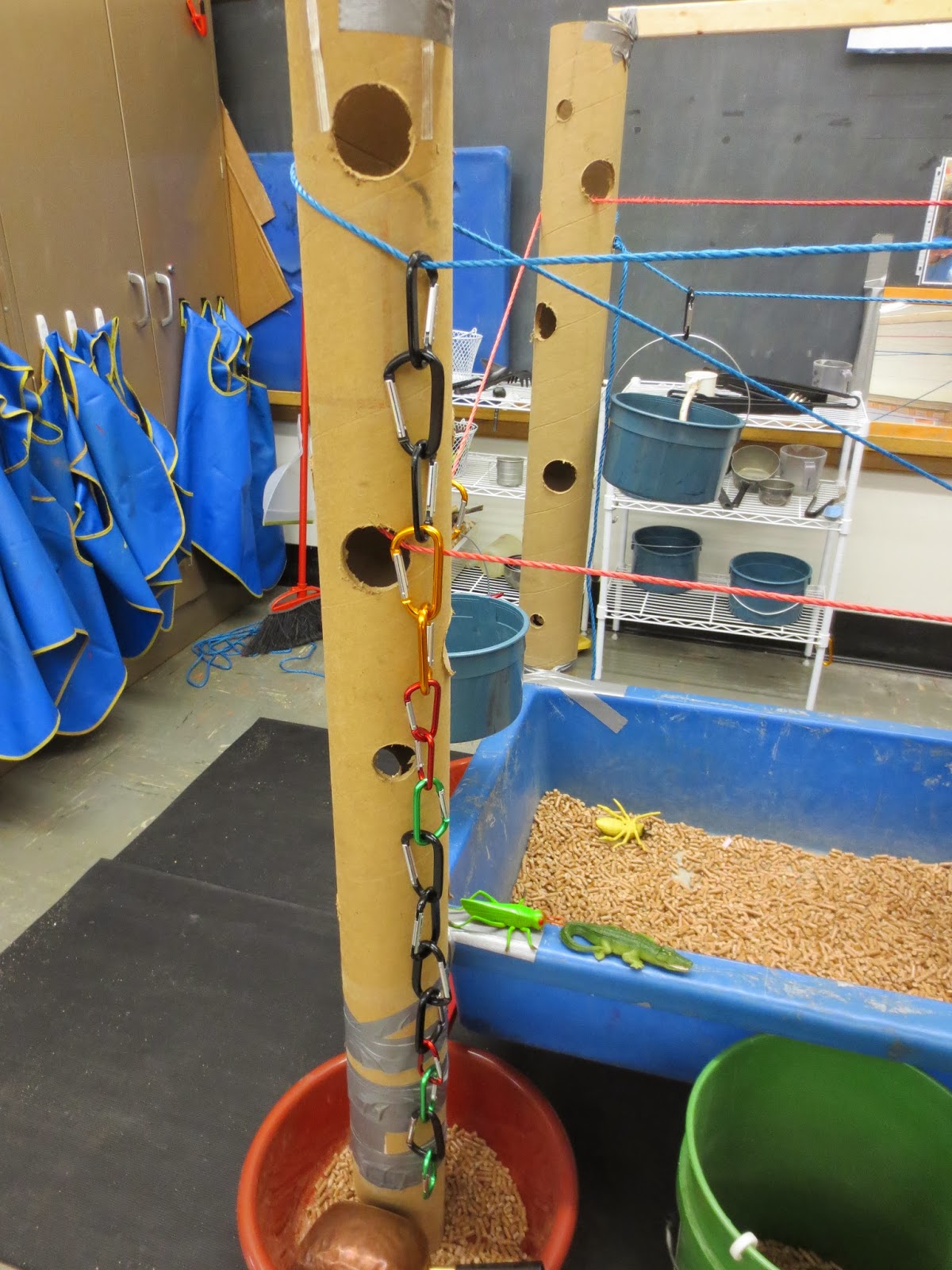The ledge is three feet off the ground and a foot wide and accessed via the steps. The children have appropriated this space for their own purposes. Last year, I moved the color blocks to the windows so the children could look out to see the world in different colors if they so desired.
Now that you understand the space, here is my favorite classroom picture of the year. I call it: Vestige of Play.
Are you surprised there are no children in the picture? There are no children, but this picture reveals a trace of something created by two children in the morning class. The trace is rendered more impressive with the effects of the afternoon sun.
Like any good picture, there is a story. The story begins with a serendipitous moment and weaves a continuing thread that actually lasts a couple of days.
It is cleanup time. Two boys have been building with the color blocks on the ledge. For cleanup, I ask them to put the color blocks back in the window. Up until this point, the color blocks have resided in the lower window. One of the boys, who was not too thrilled about putting away the blocks, finally relents. But instead of putting the blocks in the lower window, he starts putting them in the higher window. He gives me a sideways glance as if to say: "If I am going to put them away, I will put them a way my way." I just tell him: 'That works." With no further prodding, they willingly stack the blocks in the higher windows.
This is what it looked like when they were done. It was impressive, but when I came back in the afternoon, the sun had worked some magic to make it a stunning sight---and my classroom photo of the year.
The blocks were still in the window for the next class period the following day. Two different boys asked about it. They promptly took the color blocks down. I did tell them that they had to take from the top. After taking all the color blocks out of the window, they started to build again.
You notice they are not trying to make the edges line up with each other. Rather, this is an exercise in free-form balancing of the blocks.
On the third day, another child noticed the blocks stacked in the two upper windows. He set about stacking all the color blocks in one window.
Did you notice he is on his tippy toes on the bottom window ledge? He is balancing the blocks while balancing himself. That is quite a balancing act.
During the next class, this window was taken down by some other children. This all happened over the course of one week in the late fall. The stairs, the ledge and the window are still open for play but have yielded to some other pursuits.
There is a second place photo of the year; it comes from the same area in the same week. Notice there are vents on the ledge. Those are the blowers that circulate air in the room. A child climbed up the steps to look out the window. The blowers are blowing her hair and the color blocks are casting colored shadows all over her. I call this picture: Color Me Free.
I am taking a week off from blogging. I want to thank you all for a great year. Come back again next year to see what is cooking at the sensory table.

























.jpg)

































